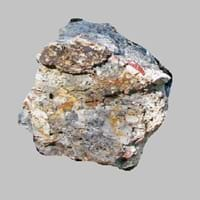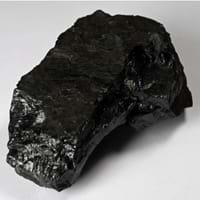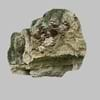Definition
Novaculite is a dense, hard, fine-grained, siliceous metamorpic rock which is a type of chert that breaks with conchoidal fracture
Coal is a combustible black or brownish-black sedimentary rock usually occurring in rock strata in layers called coal beds
Discoverer
Unknown
John Peter Salley
Etymology
From Latin word novacula, for razor stone
From the Old English term col, which has meant mineral of fossilized carbon since the 13th century
Class
Sedimentary Rocks
Sedimentary Rocks
Sub-Class
Durable Rock, Hard Rock
Durable Rock, Soft Rock
Group
Not Applicable
Not Applicable
Other Categories
Fine Grained Rock, Opaque Rock
Coarse Grained Rock, Fine Grained Rock, Medium Grained Rock, Opaque Rock
Texture
Banded, Glassy, Rough, Vitreous
Amorphous, Glassy
Color
Black, Brown, Green, Grey, Red, White
Black, Brown, Dark Brown, Grey, Light to Dark Grey
Durability
Durable
Durable
Appearance
Glassy or Pearly
Veined or Pebbled
Interior Uses
Countertops, Decorative Aggregates, Flooring, Interior Decoration
Not Yet Used
Exterior Uses
As Building Stone, Garden Decoration
Not Yet Used
Other Architectural Uses
Curbing
Not Yet Used
Construction Industry
Arrowheads, Building houses or walls, Cement Manufacture, Construction Aggregate, Cutting Tool, for Road Aggregate, Knives, Landscaping, Making natural cement, Production of Glass and Ceramics, Rail Track Ballast, Roadstone, Spear Points, Used to sharpen metal tools and weapons
Cement Manufacture, for Road Aggregate, Making natural cement, Steel Production
Medical Industry
Not Yet Used
Not Yet Used
Antiquity Uses
Artifacts, Monuments
Artifacts
Commercial Uses
Cemetery Markers, Gemstone, In aquifers, In fire-starting tools, Jewelry, Manufacture of tools, Pebbles are used in ball mills to grind in ceramics industry, To determine the gold content of jewelry
Alumina Refineries, Electricity Generation, Liquid Fuel, Manufacture of Soap, Solvents, Dyes, Plastics and Fibres, Paper Industry
Types
Not Available
Peat, Lignite, Sub-Bituminous Coal, Bituminous Coal, Anthracite, Graphite
Features
Clasts are smooth to touch, Easily splits into thin plates, Has High structural resistance against erosion and climate
Helps in production of Heat and Electricity, Used as fossil fuel
Archaeological Significance
Monuments
Used
Not Yet Used
Famous Monuments
Data Not Available
Not Applicable
Sculpture
Not Yet Used
Not Yet Used
Famous Sculptures
Not Applicable
Not Applicable
Pictographs
Not Used
Not Used
Petroglyphs
Not Used
Not Used
Figurines
Not Yet Used
Not Yet Used
Formation
Novaculite forms when microcrystals of silicon dioxide grow within soft sediments that become limestone or chalk. The formation of Novaculite can be either of chemical or biological origin.
Coal forms from the accumulation of plant debris in a swamp environment which is buried by sediments such as mud or sand and then compacted to form coal.
Mineral Content
Quartz, Silicon
Analcime, Apatite, Barite, Calcite, Chalcopyrite, Chlorite, Chromite, Clausthalite, Clay Minerals, Crandallite Group, Dolomite, Feldspar, Galena, Gypsum, Marcasite, Muscovite or Illite, Pyrite, Quartz, Siderite, Sphalerite, Zircon
Compound Content
Ca, Silicon Dioxide
Carbon, Hydrogen, Nitrogen, Oxygen, Sulphur
Types of Metamorphism
Not Applicable
Burial Metamorphism, Cataclastic Metamorphism, Regional Metamorphism
Types of Weathering
Not Applicable
Not Applicable
Types of Erosion
Chemical Erosion, Coastal Erosion, Glacier Erosion
Not Applicable
Grain Size
Fine Grained
Medium to Fine Coarse Grained
Fracture
Conchoidal
Conchoidal
Porosity
Less Porous
Less Porous
Luster
Waxy and Dull
Dull to Vitreous to Submetallic
Compressive Strength
Not Available
Cleavage
Non-Existent
Non-Existent
Toughness
1.5
Not Available
Specific Gravity
2.5-2.7
1.1-1.4
Transparency
Translucent to Opaque
Opaque
Density
2.7 g/cm3
1100-1400 g/cm3
Resistance
Heat Resistant, Impact Resistant, Pressure Resistant, Wear Resistant
Heat Resistant
Deposits in Eastern Continents
Asia
China, India, Iran, Japan, Oman, Russia, Saudi Arabia, Taiwan, Thailand, Vietnam
Bangladesh, Burma, Cambodia, China, India, Indonesia, Kazakhstan, Malaysia, Mongolia, Pakistan, Turkey, Vietnam
Africa
Kenya, Morocco, South Africa, Tanzania
Botswana, Kenya, Morocco, Mozambique, South Africa, Tanzania
Europe
Austria, France, Greece, Italy, Malta, Poland, Portugal, Serbia, Spain, Sweden, United Kingdom
Belgium, Bulgaria, England, France, Germany, Greece, Hungary, Kosovo, Netherlands, Norway, Poland, Romania, Serbia, Slovakia, Slovenia, The Czech Republic, Ukraine, United Kingdom
Others
Greenland, Mid-Atlantic Ridge
Not Yet Found
Deposits in Western Continents
North America
Canada, Mexico, USA
Canada, Mexico, USA
South America
Bolivia, Brazil
Brazil, Chile, Colombia, Venezuela
Deposits in Oceania Continent
Australia
New South Wales, Queensland, South Australia, Western Australia
New South Wales, Queensland, Victoria
All about Novaculite and Coal Properties
Know all about Novaculite and Coal properties here. All properties of rocks are important as they define the type of rock and its application. Novaculite and Coal belong to Sedimentary Rocks.Texture of Novaculite is Banded, Glassy, Rough, Vitreous whereas that of Coal is Amorphous, Glassy. Novaculite appears Glassy or Pearly and Coal appears Veined or Pebbled. The luster of Novaculite is waxy and dull while that of Coal is dull to vitreous to submetallic. Novaculite is available in black, brown, green, grey, red, white colors whereas Coal is available in black, brown, dark brown, grey, light to dark grey colors. The commercial uses of Novaculite are cemetery markers, gemstone, in aquifers, in fire-starting tools, jewelry, manufacture of tools, pebbles are used in ball mills to grind in ceramics industry, to determine the gold content of jewelry and that of Coal are alumina refineries, electricity generation, liquid fuel, manufacture of soap, solvents, dyes, plastics and fibres, paper industry.









